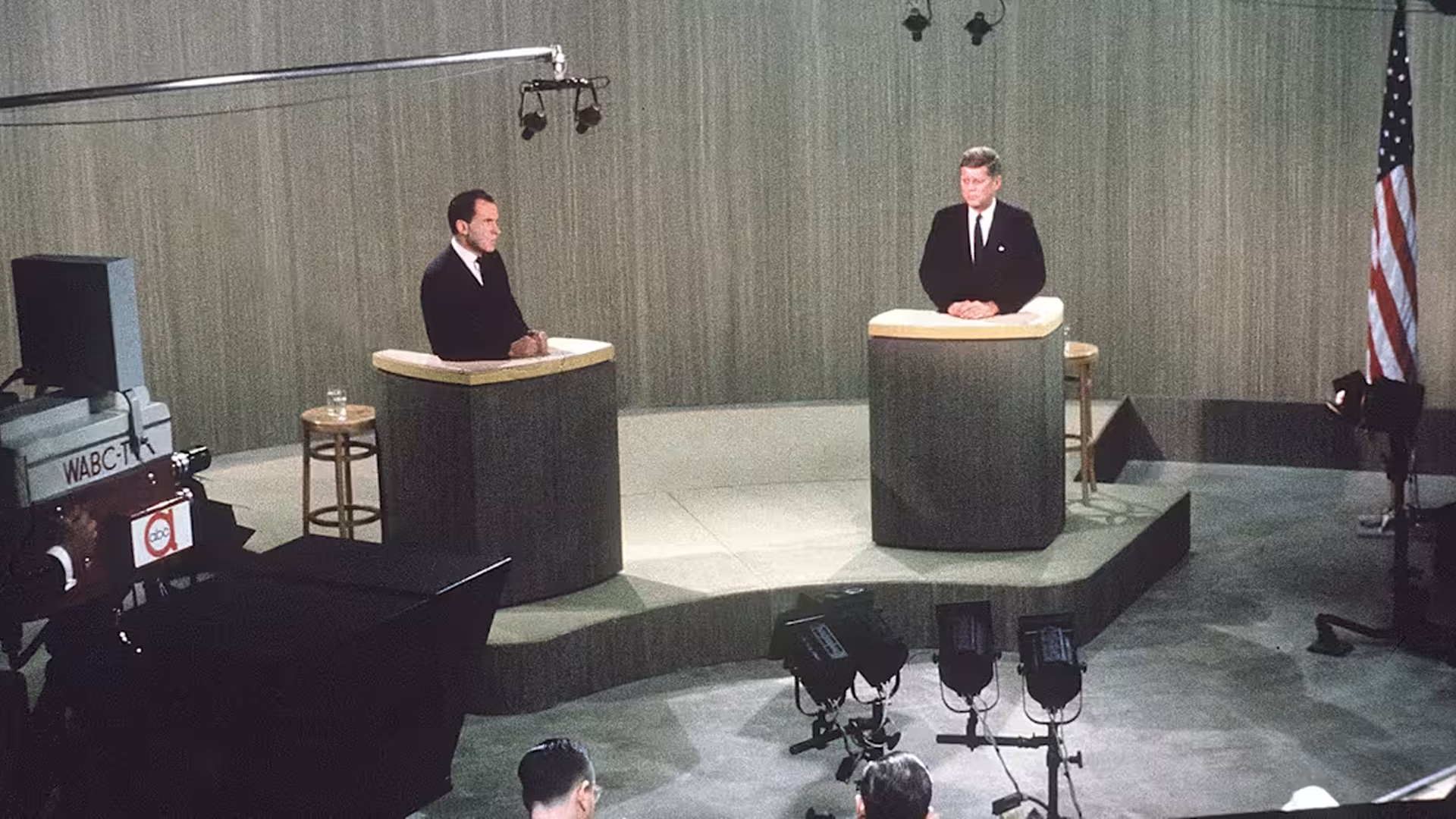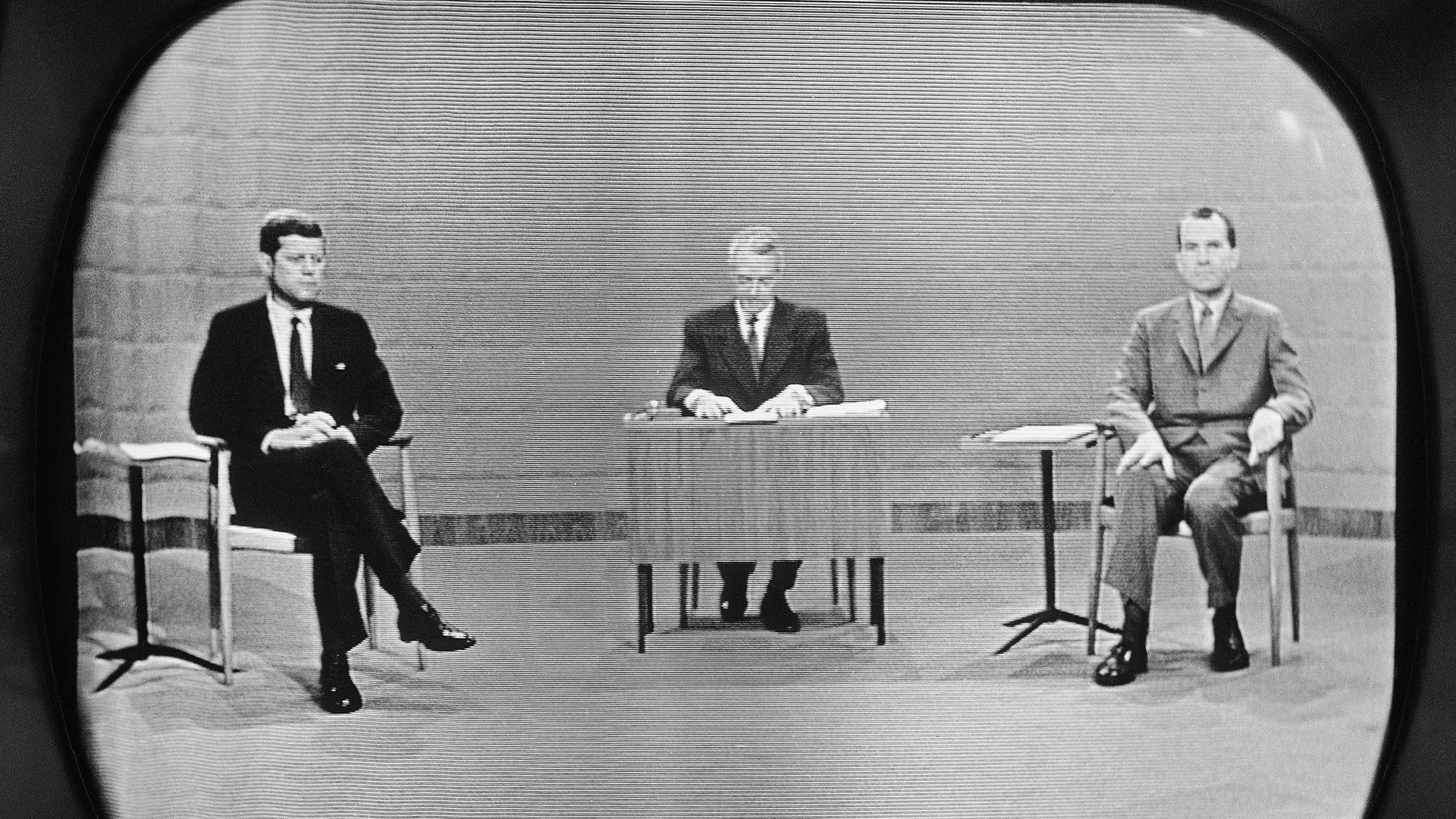Kennedy and Nixon Face Off in First Televised Debate

John F. Kennedy and Richard Nixon at their first televised presidential debate in 1960.
What Happened?
In the fall of 1960, Senator John F. Kennedy and Vice President Richard Nixon stood under hot studio lights in Chicago for a moment that would change American politics: the first-ever televised presidential debate. More than 65 million people tuned in, making it the most-watched political event in U.S. history at the time.
Television added something new to presidential politics: appearance. Kennedy looked calm, healthy, and confident. Nixon, recovering from illness and refusing makeup, appeared pale, sweaty, and uncomfortable. To radio listeners, Nixon sounded strong, but to TV viewers, Kennedy looked like the clear winner.
This contrast showed Americans that politics was no longer just about policies and speeches. It was also about how leaders connected through a screen. Kennedy’s cool presence gave him the edge, while Nixon’s tired appearance reinforced doubts about his energy and trustworthiness.
The first debate focused on domestic issues like education, health care, and the economy. Both candidates were knowledgeable, but Kennedy’s poise made him seem like a leader for a new generation. At only 43, he was trying to prove he wasn’t too young or inexperienced—and television helped him do it.
Nixon learned the hard way that image mattered. He wore a light gray suit that blended into the set, kept wiping sweat from his face, and avoided eye contact with the camera, which made him look shifty to viewers. Kennedy, by contrast, prepared carefully—arriving early to check the lighting and room conditions.
The election that followed was razor-thin. Kennedy won just 49.7% of the popular vote compared to Nixon’s 49.6%. Many historians believe that television tipped the balance, giving Kennedy the credibility and charisma boost he needed to win.
The Kennedy–Nixon debates became a turning point. From then on, candidates treated debates like performances, hiring media coaches, practicing in front of cameras, and paying close attention to clothing, gestures, and tone of voice.
These debates proved that technology could shape democracy. They raised important questions: Should appearance matter in choosing leaders? How much does media influence our choices? The lessons of 1960 continue today, not just in televised debates, but in campaign ads, social media clips, and viral moments.
Why It Matters
The Kennedy–Nixon debates showed that television had become one of the most powerful forces in politics. For the first time, millions of Americans judged candidates not just by what they said, but how they looked and carried themselves. This shift permanently changed how campaigns are run, how leaders present themselves, and how citizens make decisions in a democracy shaped by media.
?
Why did TV viewers think Kennedy won while radio listeners thought Nixon did?
How did Kennedy use television to his advantage during the debates?
Why was the 1960 presidential election one of the closest in U.S. history?
Do you think appearance should matter in politics? Why or why not?
How has media—first TV, now social media—changed the way we choose leaders?
Dig Deeper
CNN looks back at how Kennedy’s calm TV presence outshined Nixon’s nervous performance.
A look at Kennedy’s smart use of television, from debate prep to campaign ads, that helped him secure victory.
The full debate from September 26, 1960, where Kennedy and Nixon made history.
Related

McCarthyism: Fear, Power, and the Red Scare
In the 1950s, fear of communism gripped America. Senator Joseph McCarthy fueled this fear by accusing hundreds of people of being communist traitors—often without proof. The result was a national panic that tested the meaning of truth, justice, and freedom.

Halifax Resolves and the Road to Revolution
How North Carolina went from protest to the first official call for full independence from Britain.

The Louisiana Purchase: A River, A Bargain, and a Bigger United States
In 1803 the United States bought the vast Louisiana Territory from France, doubling the nation’s size, securing the Mississippi River, and setting the stage for westward expansion and hard questions about slavery and Native sovereignty.
Further Reading
Stay curious!
